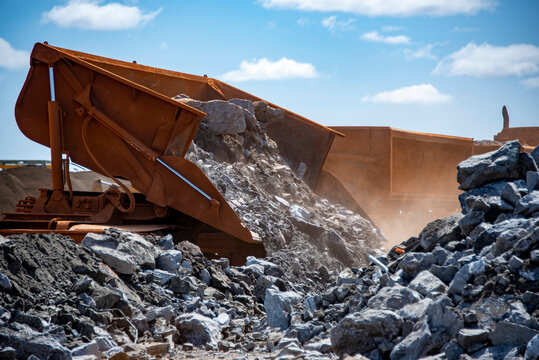African lithium producers could face growing uncertainty as the United States advances a new method of extracting lithium without traditional mining, potentially redrawing the global supply map of the critical mineral that powers electric vehicles and renewable energy storage systems.
The development comes as Lilac Solutions, a California-based cleantech company, completes a pilot project in Utah demonstrating a breakthrough extraction process that draws lithium directly from brine, saline water sources such as oilfield wastewater and salt lakes, instead of hard rock mining. The technology, described by the company as an ‘ion-exchange process’, achieved 87 percent lithium recovery and 99.97 percent impurity rejection, exceeding design targets.
Lilac’s pilot at the Great Salt Lake forms part of a broader US strategy to localize critical mineral production and reduce dependence on imports from China and other global suppliers. The company plans to commission its first commercial facility in Utah and Nevada by 2028, producing 5,000 tonnes per year of lithium carbonate equivalent, enough to double America’s domestic lithium output.
Read also: Senegal’s $900 million ‘Pink Lake’ housing project sparks local opposition over environmental risks
The new model offers tangible advantages: lower production costs, minimal land disruption, and direct proximity to the North American electric vehicle market. Lilac claims its process can recover over 90 percent of available lithium while cutting infrastructure costs by up to half compared to traditional hard-rock mining. The US government is backing such projects with funding incentives under its Inflation Reduction Act, part of a strategy to create cleaner and more resilient supply chains for critical minerals.
If the model scales successfully, it could shift the global lithium trade away from resource-dependent economies toward countries with advanced processing capacity. That prospect has raised concern among African producers, many of whom have built economic strategies around exporting spodumene concentrate; a lithium-rich mineral extracted through conventional mining.
Zimbabwe, Africa’s largest lithium producer, exported 586,197 tonnes of spodumene concentrate in the first half of 2025, a sharp increase from 451,824 tonnes during the same period a year earlier. Lithium accounted for roughly $600 million in export earnings in 2024, driven by rising demand for electric vehicles and global decarbonization targets. The government has announced plans to ban exports of raw lithium from 2027, aiming instead to develop local refining capacity and retain more value within the economy.
Read also: Lagos hosts Africa’s first Electric Powerboat Race, steering a shift in the continent’s Blue Economy
Other producers across the continent, including Namibia, Mali, Ghana, and the Democratic Republic of Congo, have similarly intensified exploration and export activity. Together, African countries hold about 6 percent of the world’s known lithium reserves, positioning the region as a key supplier in the global energy transition. But much of the exported mineral leaves the continent unprocessed, feeding China’s extensive refining industry, which controls over 70 percent of the global lithium chemical market.
Lilac’s emerging model, which relies on direct lithium extraction (DLE) from brines, could undercut this export-driven approach. The process is more sustainable, requiring less water and generating minimal waste compared to open-pit mining. For countries whose lithium sectors are still dominated by extraction rather than processing, the implications are significant. If the US and other markets adopt large-scale DLE technologies, demand for raw African concentrate could fall sharply over the next decade.
Market analysts say the shift mirrors an earlier disruption in the cobalt trade, where refiners in Asia gained leverage by moving up the value chain while mining nations saw declining margins. A similar pattern could emerge in lithium unless African producers adapt through investment in processing, battery component manufacturing, and technology transfer.
In Zimbabwe’s Bikita and Kamativi mining belts, lithium projects operated by Chinese and Australian firms continue to expand output, but few have committed to large-scale refining or chemical conversion on the continent. In Namibia’s Uis and Karibib regions, operations are still focused on concentrate exports, even as global prices show signs of volatility. Benchmark Mineral Intelligence data shows lithium carbonate prices fell nearly 40 percent in the first half of 2025 amid increased supply and technological competition.
Read also: Kenya, Tanzania, and Djibouti Ports compete for trade supremacy amid rising regional investments
The situation presents both risk and opportunity. Analysts note that African governments could still benefit if they act quickly to secure partnerships with companies developing cleaner extraction technologies. Pilot DLE projects have already begun in South Africa’s Northern Cape and Kenya’s Lake Magadi, though none yet operate at commercial scale. Such collaborations could enable African nations to retain relevance in a rapidly changing industry while reducing the environmental footprint associated with open-pit mining.

The global shift also carries broader sustainability implications. Traditional lithium mining, especially in fragile ecosystems, consumes large volumes of water and generates significant waste. In contrast, DLE techniques like Lilac’s can return over 90 percent of extracted brine to its source, minimizing ecological damage; a feature increasingly favored by international investors and regulators.
Lilac Solutions, backed by investors including Breakthrough Energy Ventures and BMW i Ventures, is reportedly raising $250 million to scale up production capacity. Its commercial rollout in the US would coincide with Washington’s policy to strengthen domestic supply chains for clean-energy materials. If successful, the United States could transition from a net importer to a top-tier supplier, altering the balance of global trade in lithium and putting pressure on traditional exporters.
Read also: EU postpones sustainability reporting rules for non-EU companies, easing pressure on global firms
For African economies banking on raw lithium exports, the challenge now lies in repositioning. Industry experts suggest that diversifying into refining, energy storage systems, and component manufacturing will be essential to remain competitive. The shift marks an early test of how well resource-rich nations can adapt as innovation begins to outweigh geography in determining who leads the next phase of the energy transition.






